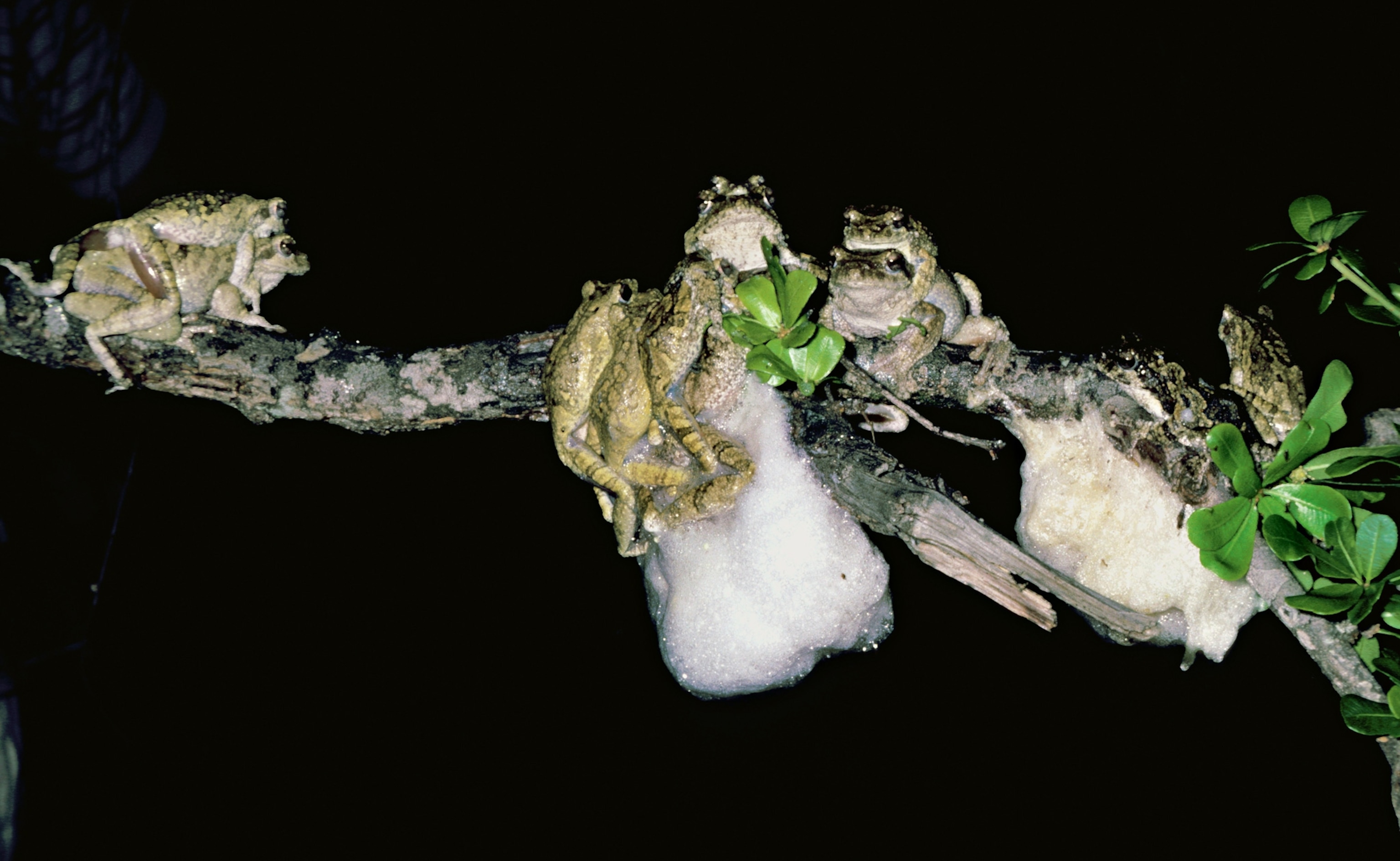
To Mate, This Frog and Her Sex Partners Work Up a Lather
The female gray foam-nest tree frog increases her odds of reproducing by mating with multiple males and bubble-wrapping her eggs.
These frogs put the “group” in “group sex”—and that helps them thrive.
Of all vertebrates, gray foam-nest tree frogs exhibit the most extreme form of simultaneous polyandry, or a female mating with multiple males, says behavioral ecologist Phillip Byrne of the University of Wollongong in Australia.
After a heavy rain swells pools in the African landscape, male frogs gather in poolside vegetation and call for mates, while females in the pools absorb water through their skin. When she’s hydrated enough, a female heads for an overhanging branch. En route she is amplexed—gripped in a sexual embrace—by a male.
The joined pair climb to a nesting site. There the female discharges a watery fluid, whips it to a foam with her back legs, and puts in her eggs. At this point, says Byrne, up to 20 more males “line up in an orderly fashion by the female and vigorously and synchronously beat their back legs to help make a big wonderful nest,” where they deposit their sperm.
The group spends hours pumping out gametes and bubble-wrapping them in foam that will shield growing embryos. Five days later tadpoles will wiggle free of the nest and plop into the water below.
Nearly all C. xerampelina females mate with multiple males to produce one egg clutch, says Byrne—and that confers genetic advantages. His research shows that 20 percent more offspring survive from those females than from females that mate with just one male.
Unlike species whose males compete brutally to mate, these frogs’ orgies are calm affairs, Byrne says. “By the females’ letting lots of males sire offspring, it makes this a pretty relaxed business.”
Gray Foam-Nest Tree Frog
HABITAT/RANGE: Tree-, crop-, and grass-covered lands in parts of southeastern Africa
CONSERVATION STATUS: Least concern
OTHER FACTS: Polyandry makes offspring more genetically diverse. That could help insulate C. xerampelina from threats that have resulted in about a third of the globe’s amphibian species being classified as threatened or extinct.





